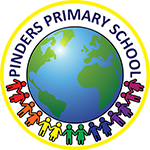Historical Enquiry and Interpretations
|
|
Early Years |
Year 1 |
Year 2 |
Year 3 |
Year 4 |
Year 5 |
Year 6 |
|
Historical Enquiry and Interpretation
|
Identify similarities and differences.
Know that information can be retrieved from books, the internet and people.
Begin to ask and answer 'how' and 'why' questions in response to stories or events.
|
Sort artefacts, photographs and facts using the terminology "then" "now" 'new' and 'old'
Use a source to find out about a period to describe differences between then and now.
Ask questions about how they are similar or different to each other.
Using stories to encourage children to distinguish between fact and fiction. |
Compare small details from a range of artefacts, photographs and facts.
Use a range of sources to find out about a period to describe differences between then and now.
Be aware of other peoples' (and key individuals) opinions and values.
Express thoughts and feelings about different people and events in the past.
|
Recognise when a source is a primary source.
Explore alternative points of view in history and compare different versions of the same story.
Undertake guided eLearning to research.
|
Recognise the difference between primary and secondary sources.
Understand that there is often not a single answer to historical questions.
Begin to suggest sources to answer questions.
Use eLearning to research independently.
|
Use a range of primary and secondary sources to build up a picture of the past and evaluate their usefulness.
Understand that some sources of evidence are more reliable than others.
Understand different ways the past has been represented and why there are different versions of the past.
Understand the limitations of eLearning.
Using relevant sources to select appropriate evidence to answer questions.
|
Check the reliability of different sources of evidence by cross referencing.
Suggest relevant sources to select appropriate evidence to answer questions.
|
